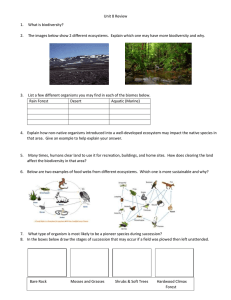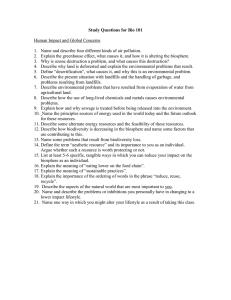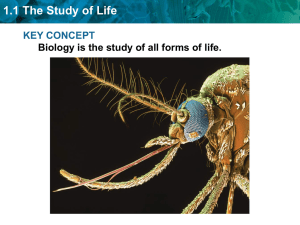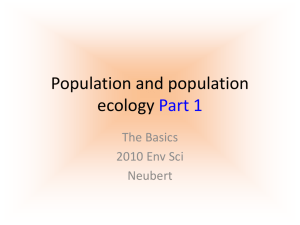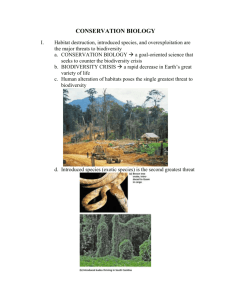Study Guide for Test 1
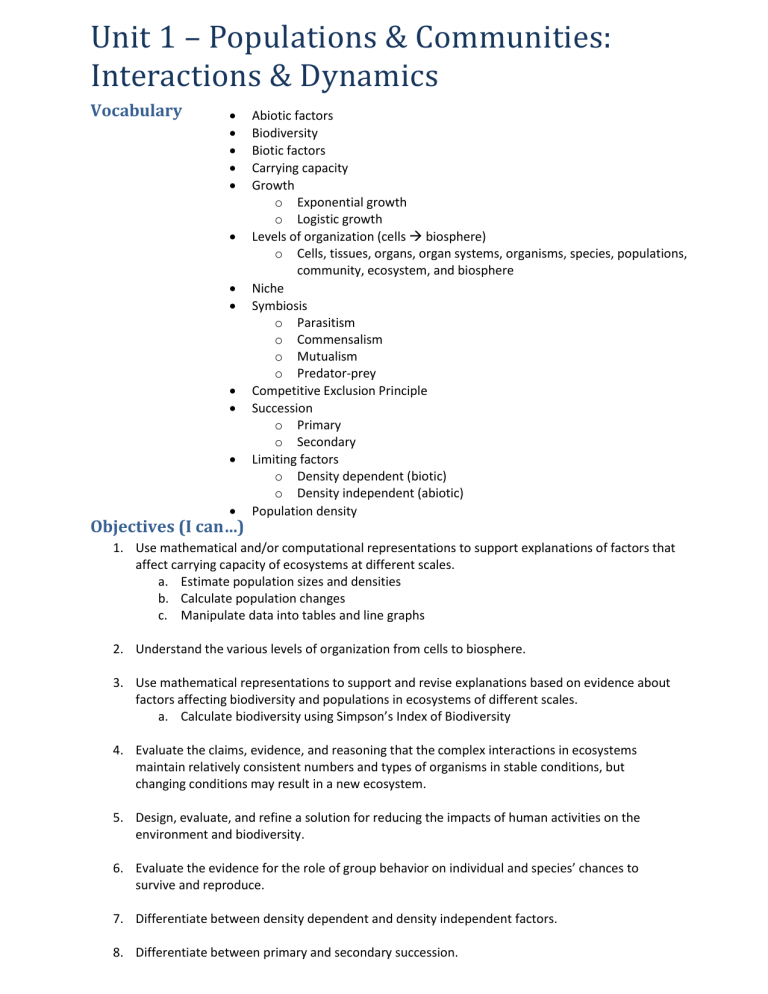
Unit 1 – Populations & Communities:
Interactions & Dynamics
Vocabulary
Abiotic factors
Biodiversity
Biotic factors
Carrying capacity
Growth o Exponential growth o Logistic growth
Levels of organization (cells biosphere) o Cells, tissues, organs, organ systems, organisms, species, populations,
Niche community, ecosystem, and biosphere
Symbiosis o Parasitism o Commensalism o Mutualism o Predator-prey
Competitive Exclusion Principle
Succession o Primary o Secondary
Limiting factors o Density dependent (biotic) o Density independent (abiotic)
Population density
Objectives (I can…)
1.
Use mathematical and/or computational representations to support explanations of factors that affect carrying capacity of ecosystems at different scales. a.
Estimate population sizes and densities b.
Calculate population changes c.
Manipulate data into tables and line graphs
2.
Understand the various levels of organization from cells to biosphere.
3.
Use mathematical representations to support and revise explanations based on evidence about factors affecting biodiversity and populations in ecosystems of different scales. a.
Calculate biodiversity using Simpson’s Index of Biodiversity
4.
Evaluate the claims, evidence, and reasoning that the complex interactions in ecosystems maintain relatively consistent numbers and types of organisms in stable conditions, but changing conditions may result in a new ecosystem.
5.
Design, evaluate, and refine a solution for reducing the impacts of human activities on the environment and biodiversity.
6.
Evaluate the evidence for the role of group behavior on individual and species’ chances to survive and reproduce.
7.
Differentiate between density dependent and density independent factors.
8.
Differentiate between primary and secondary succession.


